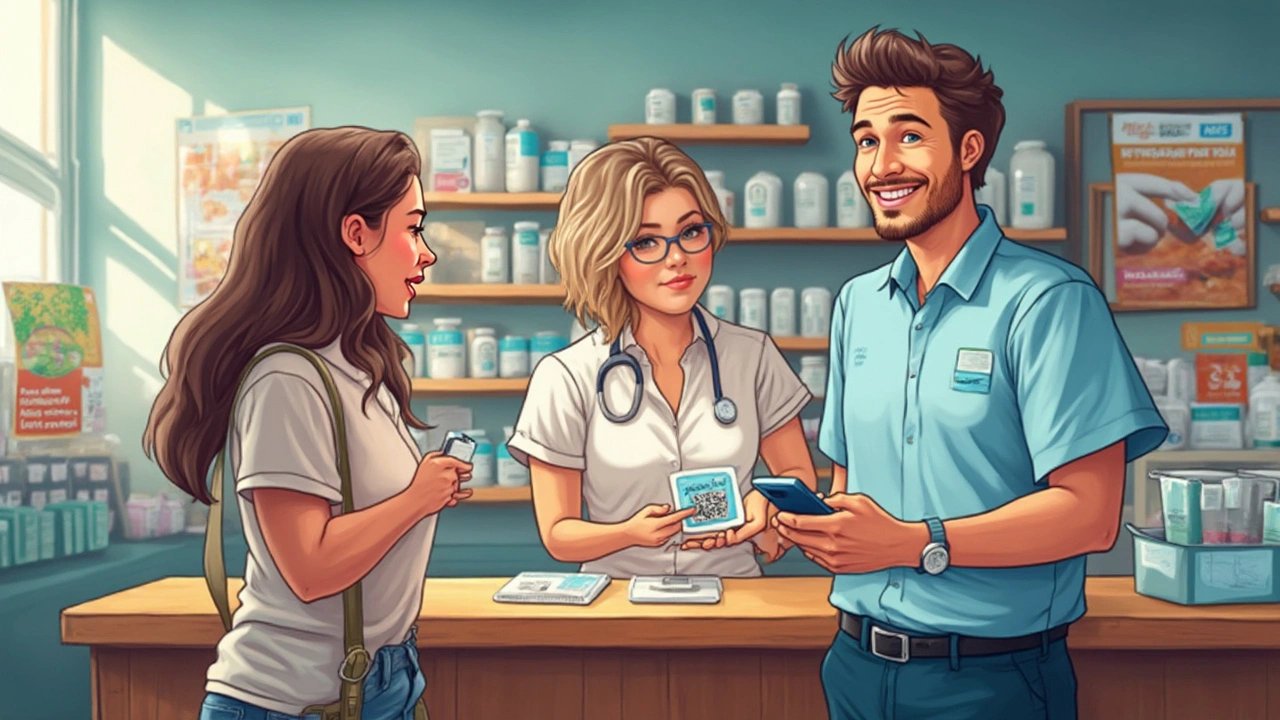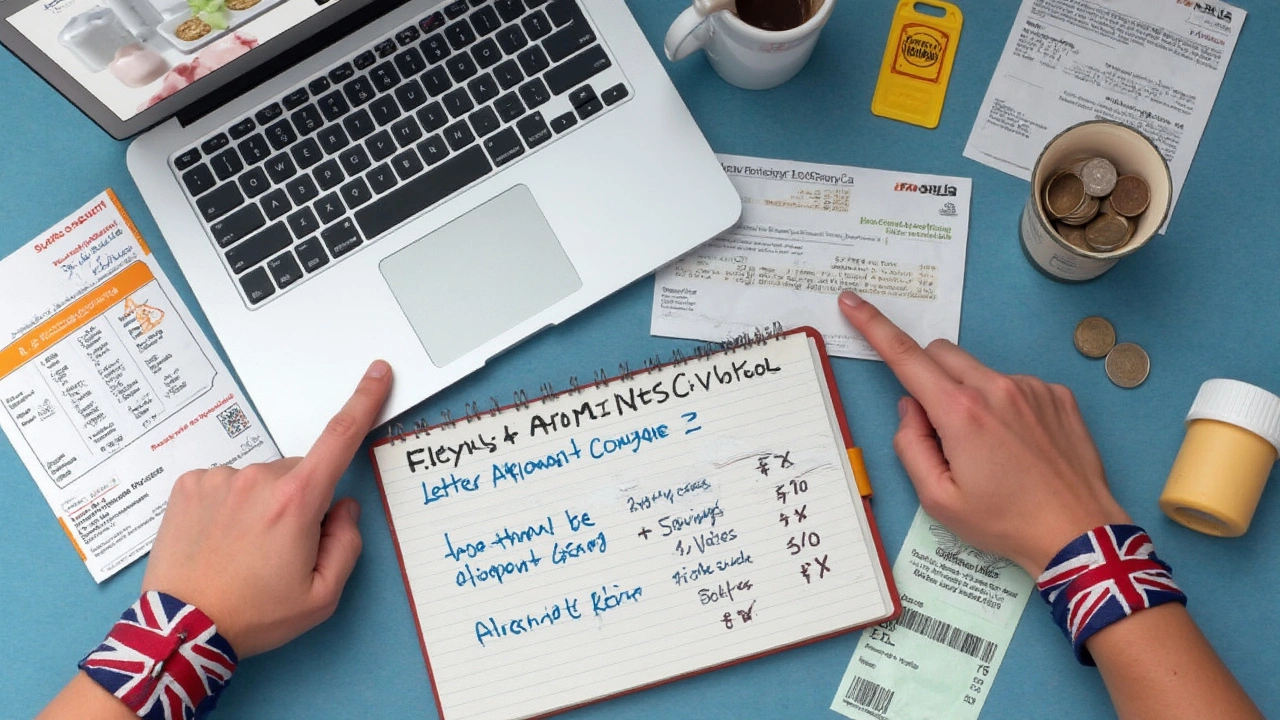Where Digital Drug Coupons Come From (And How to Find Them Fast)
Ever been hit with sticker shock at the pharmacy? The cold sweat hits, you look at the total, and suddenly that prescription feels like a luxury. You’re not alone. Driving down the cost of medicine has become a full-time hobby for a lot of us, and digital coupons are basically the new frontlines. But where do these little online gold mines actually come from? Let’s break it down—no corporate smoke and mirrors.
Most people are familiar with sites like GoodRx, but there’s a lot more going on. Makers of drugs (the actual pharmaceutical companies), pharmacy-savvy tech startups, and even some clinics toss out digital coupons to draw you in or cut you a break. Think of coupons as marketing tools with a side benefit: you get the savings, they keep you loyal, and nobody—except insurance companies—seems to lose.
So, how do you snag one of these deals? It’s crazy simple, but a few steps make the difference. Start with the big coupon hubs. GoodRx rules the scene, but that’s just one flavor. Blink Health, SingleCare, WellRx—these all play by similar rules, giving you instant price comparisons and printable or digital coupons. Here’s a little secret: prices for the same drug can swing wildly, even on the same block. Don’t just trust one coupon platform—cross-check them. Moderately obsessive? You could try searching the manufacturer’s site for patient-assistance programs and hidden promo coupons, especially for expensive meds. Sometimes, the best deals aren’t even public—online patient forums, Reddit, and health advocacy groups share links to coupon offers direct from the companies.
If you’re old-school, you might be used to cutting out little bits of paper. With digital coupons, it’s actually easier. Open the site, type in your med, your zip code, and you instantly see participating pharmacies and their prices. Often, you can text the coupon code to yourself or print it. Pharmacies scan it, look at you a little surprised like, “Wow, nice save,” and ring up the deal.
Another secret weapon—a lot of large chain pharmacies (like CVS and Walgreens) have their own membership discount programs. Don’t overlook them. You wouldn’t believe how the prices can compete with independent coupon sites. Sometimes, stacking savings is possible if the policies allow. Always ask the pharmacist. They see coupon warriors come in every day and can drop hints on which code works best for your meds.
And if you’re ready for more bargains, go check out other sites like GoodRx. You might be shocked at the alternatives—some smaller sites don’t pop up first in search engines but have partner deals that beat even the giants. Keep your options open, and shop around like you’re picking out a new phone. When hundreds of bucks are at stake, a few taps on your phone are worth it.

How Digital Coupons Actually Work at the Pharmacy (And Why Pharmacies Play Along)
It feels a little too easy, doesn’t it? Download a coupon, show your phone to the pharmacist, and watch the price drop. You don’t even hand over a credit card until checkout. So how does the magic work in the background without breaking the system?
This is where things get fun. Most digital coupons function like temporary “discount insurance” that slides in between your real insurance (or lack of it) and the pharmacy’s regular price. When you flash that code, the pharmacy runs it through their system, just like insurance. On the back end, a magical web of “pharmacy benefit managers” (PBMs) processes these transactions. The PBM negotiates discount rates with manufacturers, pulls reimbursement from behind-the-scenes accounts, and passes the savings to you at the counter—right there, right then. Pharmacies accept these deals because coupon customers are business they might otherwise never see, especially if the local competition is fierce.
Packed into each coupon is a “BIN” number, a “PCN,” and a “Group ID.” These are the engines under the hood—the codes that tell the pharmacy computer what to bill, who’s footing the bill, and how much you’ll pay versus what the insurance would have been. For uninsured folks or those buying outside their plan, these coupons can sometimes beat even insured prices. No, it isn’t cheating—it's baked into the rules.
Next time, take a peek at your coupon—those numbers aren't random. They’re the handshake between the pharmacy and the coupon network. Not every drug is eligible, though. Controlled substances like certain painkillers usually can’t get coupon discounts because of strict federal rules. Also, some state Medicaid programs won’t let you combine coupons with government insurance—again, double-check if you’re unsure.
Let’s talk about the pharmacist’s role for a second. Pharmacists see coupon codes so often now it’s almost routine, but sometimes systems don’t play nice. If your pharmacy’s register says, “Coupon not recognized,” hand them the specific info or ask if another branch in the area takes those coupons. Sometimes, the best deals are at stores where staff know the digital coupon game inside out. If you get stuck, ask your pharmacist to ring up the coupon both with and without your insurance—and pick the better deal. It’s not rude, it’s savvy, and they usually want to help.
These coupons don’t last forever. A code can expire, or the deal can change based on contracts between PBMs and pharmacies. Always double-check that what you’re showing matches the current offer. It’s super frustrating when you expect $9 and suddenly it’s $43 because a deal vanished overnight. Refresh the site every refill and keep backup options in your pocket—having two or three coupon apps ready can save you a mad dash to find a new deal at the last second.

How Much Can You Really Save—and Where Digital Coupons Work Best
Dreaming of scoring free medicine? Well, digital coupons probably won’t make the pharmacy pay you to take meds, but the real-world savings can be jaw-dropping. What most people don’t realize is just how wild the difference in price can be between sticker shock and final checkout with coupons in hand.
Check out some real stats: a branded cholesterol drug that retails at nearly $200 could drop to $47 or less with the right coupon. Generic antibiotics for a routine infection can swing from $37 down to $6. Even for common drugs like blood pressure pills (think lisinopril or amlodipine), coupons regularly clip off half—or sometimes more—of the pharmacy list price. Now multiply that by a year’s worth of refills, and you’re talking hundreds, even thousands, in your wallet.
Here’s a more concrete picture:
| Drug Type | Typical Retail Price | Coupon Price (Lowest Found) | % Saved |
|---|---|---|---|
| Metformin (Diabetes) | $15 | $4 | 73% |
| Atorvastatin (Cholesterol) | $27 | $7 | 74% |
| Xarelto (Blood Thinner) | $570 | $457 | 19% |
| Zoloft (Depression) | $12 | $6 | 50% |
The game changes by drug, location, and timing. Popular generics see the deepest slashes. Brand names can be tougher, but sometimes the manufacturer’s patient-assistance coupons destroy the price—especially for new drugs with a lot of publicity. Your ZIP code even matters. A coupon for a pharmacy in downtown Dallas might chop more off the price than a suburban store forty miles away. Play with locations in the app search bar and you’ll see the prices hop around like crazy.
It doesn’t stop at pills, either. Inhalers, insulins, shots, creams—if it comes from the pharmacy counter, there’s probably a coupon. Go big by stacking: combine pharmacy discount membership, digital manufacturer coupon, and comparison tools for the same drug. Sometimes you’ll spend five more minutes and walk away with change for coffee and a donut… after paying for the medicine. For ongoing meds, set a calendar reminder to check for updated coupons every refill cycle—a few minutes now can mean a free tank of gas at the end of the month.
You’re probably thinking, is there any downside? Not many, but here are the gotchas: if you use a coupon instead of insurance, that purchase might not count toward your deductible. For regular users with high drug costs, weigh the savings against what you could be building up for later insurance reimbursement. Also, watch out for privacy trade-offs. Coupon sites need your ZIP code and prescription details to find prices, and sometimes your info gets pinged around between third-party brokers. If privacy matters, use the platforms with transparent data policies.
Finally, keep experimenting. What saves you $80 this month might shift next month if a deal changes or your pharmacy updates contracts. It pays (literally) to check multiple platforms: play GoodRx against SingleCare, check manufacturer offers, and scan those other sites like GoodRx for sudden deals. If you spot a dramatic price change, don’t be shy—ask the pharmacy staff why. Sometimes they know about an expiring offer or a new coupon about to drop.
Digital coupons are no magic wand, but they’re as close as we’ve got to instant, honest-to-goodness price relief at the pharmacy counter. Dive in, compare, get curious, and those sky-high drug tabs won’t look so intimidating next time you stop by.


Alex Bennett
May 1 2025Ever notice how the coupon sites act like a treasure map for the broke? They line up cheap meds like a discount buffet, and you just have to swipe through the apps. The trick is not to trust the first price you see-cross‑checking can shave off half the cost. Also, keep an eye on the pharmacy’s own loyalty program; they love to hide extra cuts. Bottom line: a few extra taps are worth the savings.